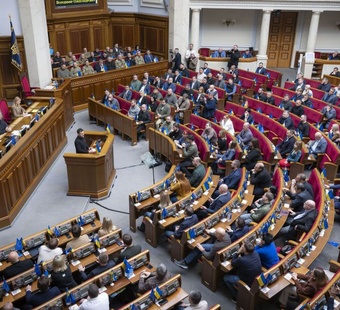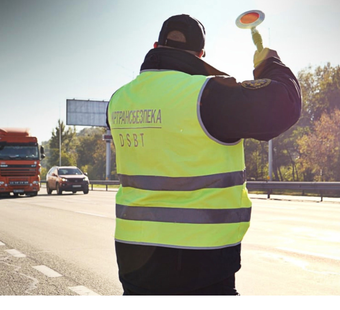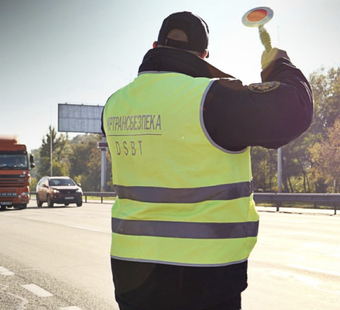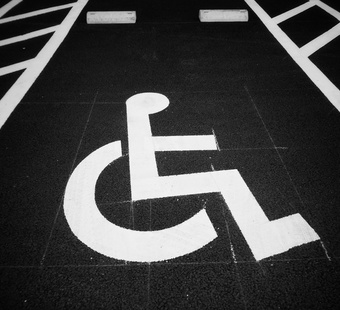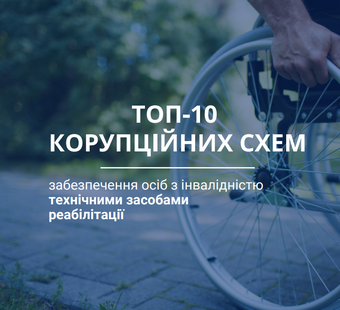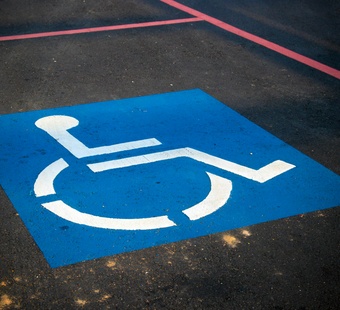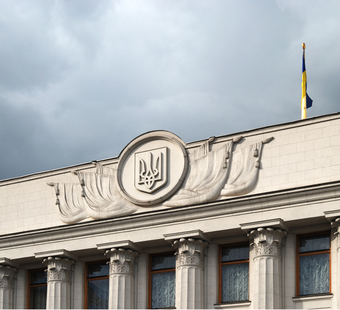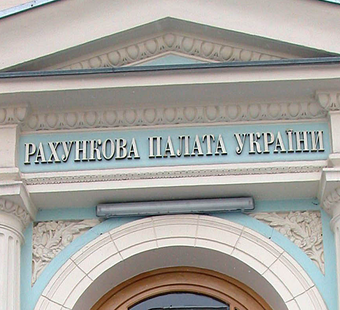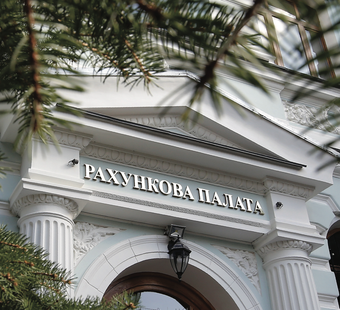>
Analytics>
Anti-corruption examination of draft laws Verkhovna Rada of the IX convocationAnti-corruption examination of draft laws Verkhovna Rada of the IX convocation
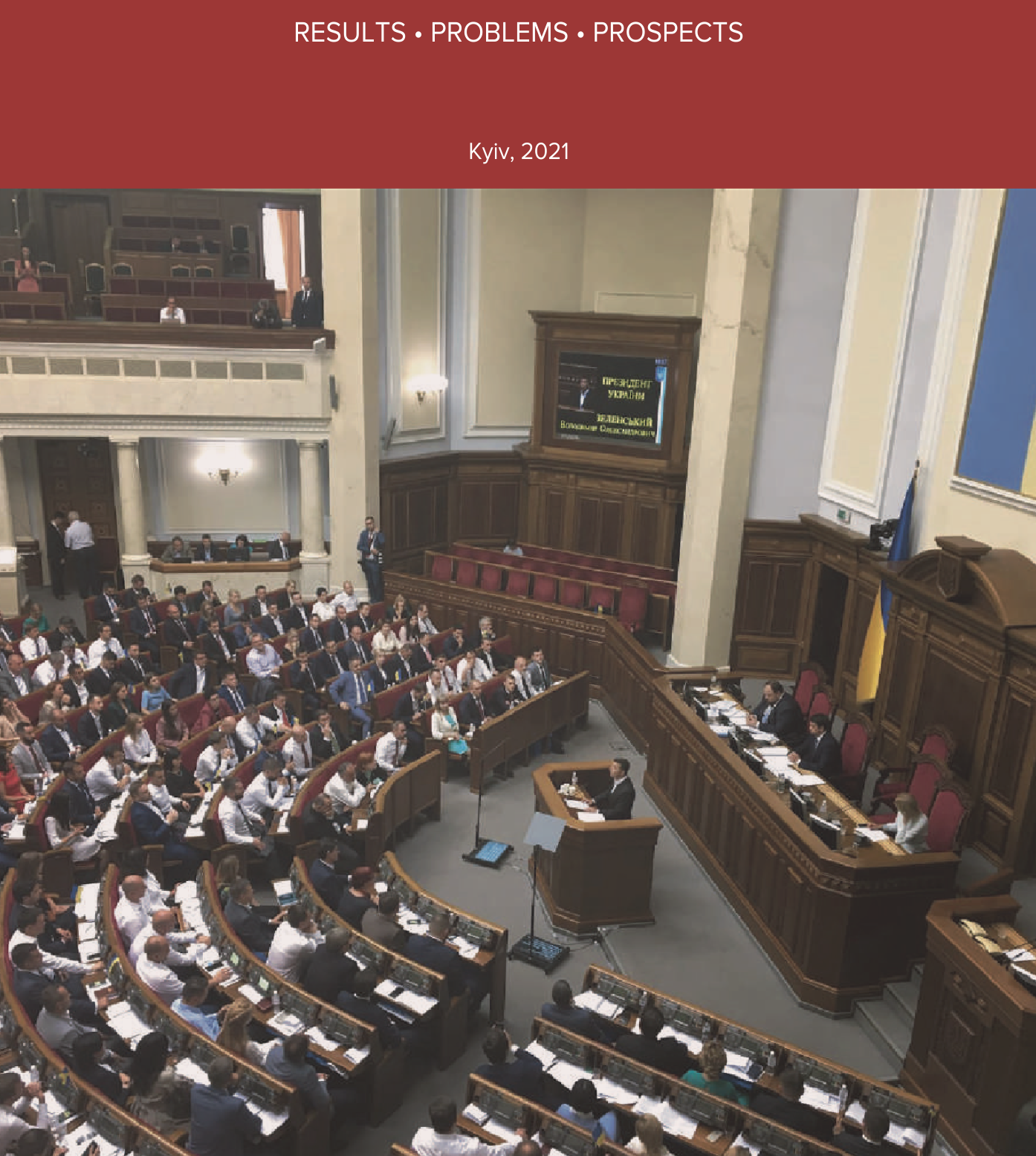

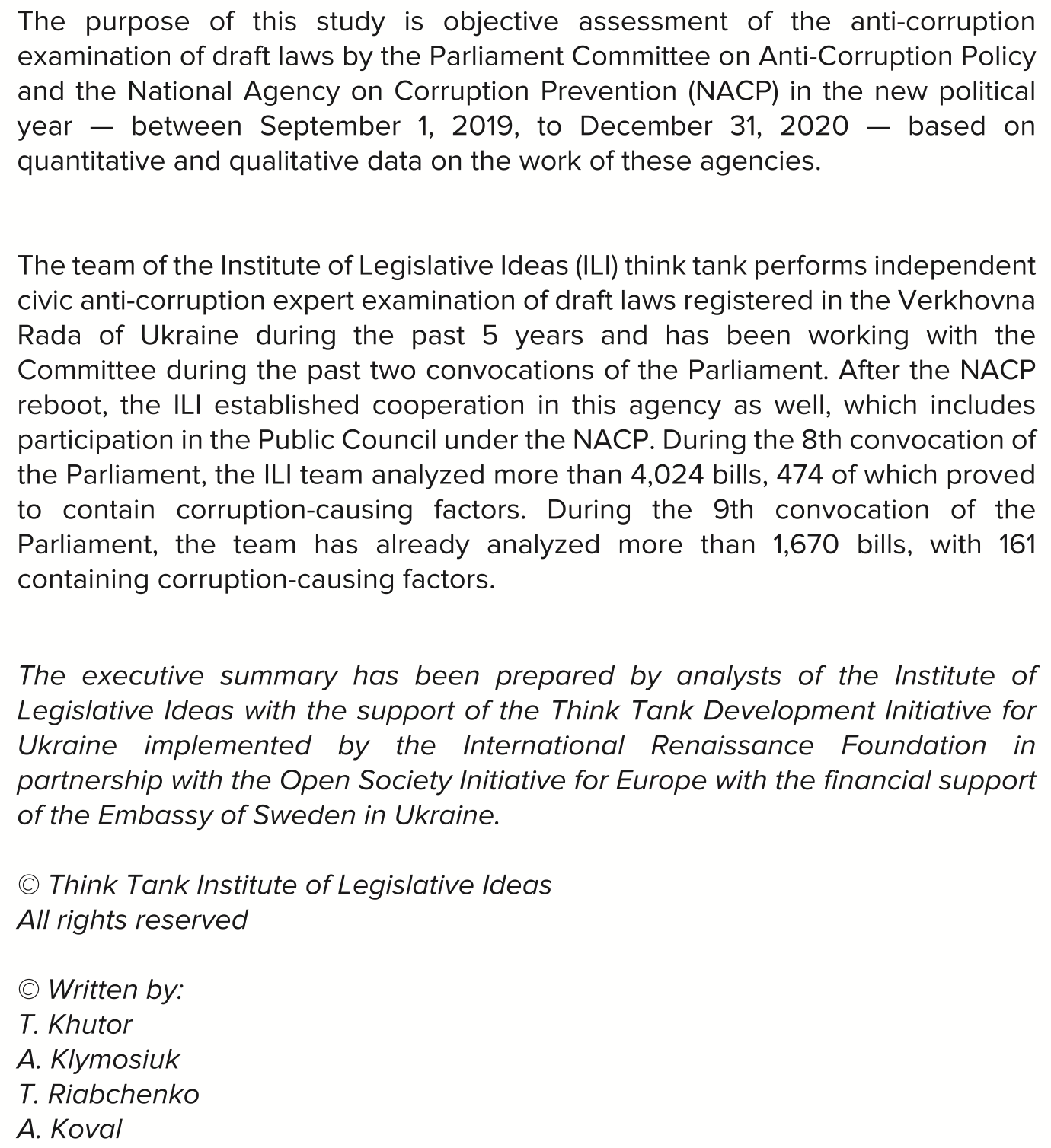
Introduction

Foreword

At the beginning of the new political season 2020, national media actively published the news that a Ukrainian MP received USD 13 thousand for amendments to a draft law aiming at lobbying the adoption of the green tariff for entrepreneurs that recycle waste. During the undercover operation, the MP told a NABU detective that this practice is far from unique. This is evident from the fact that only recently, amendments were made to the law to eliminate 2 a legalized corruption scheme of property assessment through authorized electronic platforms, which brought UAH 700,000,000 of profits to beneficiaries and, thus, the same amount of loss to citizens.
This further confirms that corruption enshrined in the legislation is one of the pillars of corruption in the country.
The task of identifying corruption-causing factors in draft laws and preventing their adoption falls on three entities-the Verkhovna Rada Committee on Anti-Corruption Policy (hereinafter-the Anti-Corruption Committee), the National Agency on Corruption Prevention (hereinafter NACP), and the Ministry of Justice of Ukraine (hereinafter MoJ).
The study of these agencies' activity in anti-corruption examination of draft laws during 2018-2019 shows that these measures are rather inefficient with certain entities, such as the MoJ and the NACP, which has not examined a single draft law in the review period.
During 2019, new people joined all the aforementioned institutions: new MPs were elected, new NACP and MoJ leadership was appointed.
These circumstances necessitated a reassessment of the activities of these bodies.
At the same time, when we requested information about anti-corruption examination of draft laws, the MoJ responded that the mandatory examination is performed by the Ministry of Justice of Ukraine in all cases except anti-corruption examination of draft regulatory acts filed with the Verkhovna Rada of Ukraine by members of the Parliament of Ukraine which are reviewed by the Anti-Corruption Committee of the Parliament; mandatory anti-corruption examination by the Ministry of Justice of Ukraine is performed for all draft regulatory acts filed with the Cabinet of Ministers of Ukraine. The documents attached to the answer show that the anti-corruption examination is conducted by the Ministry of Justice within the framework of the general legal examination of the draft Law. Due to these peculiarities of MoJ's anti-corruption examination and the absence of reports for Q4 of 2020, we cannot perform objective and comprehensive assessment of changes in MoJ's activity compared to other agencies which conduct anti-corruption examination of draft laws.
- provide an objective assessment of the current state of the art with functioning and performance of anti-corruption examination of draft laws in view of the Anti-Corruption Committee and NACP activity between September 1, 2019, and December 31, 2020;
- compare the results of the examination by the indicated entities;
- identify key issues that obstruct effective conduct of anti-corruption examination by each of the agencies and provide recommendations how to overcome them.
The performance assessment and provided recommendations are based on our prior experience with anti-corruption examination of draft laws and the principles of effective anti-corruption expert review developed as part of a profound study on anti-corruption assessment of legislation conducted by the Regional Cooperation Council and the Regional Anti-Corruption Initiative for South East Europe.
In order to optimize these principles and adapt them to the Ukrainian anti-corruption examination of draft laws, we developed relevant criteria on their basis, which can apply to anti-corruption examination performed by authorized entities, namely, the Anti-Corruption Committee and the NACP.
01. Completeness of the Examination
The anti-corruption examination should be conducted for all draft laws from all legal spheres. It is not only the text of the draft law that needs to be examined but also the explanatory note and other supplementary documents attached to the draft law, i.e. the examination must be comprehensive. In addition, anti-corruption examination can be considered complete only when it is conducted at all stages of lawmaking, from the development of the draft law to its adoption and signing, i.e. when it works as a system.
02. Prioritizing
Anti-corruption examination should be conducted primarily for draft laws in spheres which are most vulnerable to corruption or those which regulate the most significant social relations, as well as for draft laws to be adopted in the near future.
03. Timeliness
Anti-corruption examination should be done in the period which would enable the use of recommendations provided and prevent the adoption of draft laws with corruption risks.
04. Argumentativeness
Anti-corruption examination must be conducted based on, and according to, provisions of high-quality, professional, evidence-based methodology. The development and further use of the methodology contributes to the effectiveness of these activities and minimizes the risk of subjective and biased decisions during the examination.
05. Uniform approaches
The goal for all the stakeholders of the lawmaking process should be to prevent the emergence of corruption risks in legislative provisions. This also applies to entities that further perform anti-corruption examination of draft laws. This activity can only be effective with joint effort and provided there is a common vision of ways to prevent corruption-causing provisions. This requires adequate communication between lawmakers and anti-corruption examination subjects and necessary conditions for public participation in the examination process.
06. Binding nature of the recommendations
The lawmakers must take into consideration the recommendations of the anti-corruption examination and provide information on whether such recommendations have been taken into account or justification why not. Effective control over the use of the provided recommendations is required; the subject of the anti-corruption examination should be able to monitor compliance. It also makes sense to create a feedback loop for the lawmakers. The results of civic anti-corruption examination must be publicized.
07. Publicity
Anti-corruption examination of draft laws must be publicly available. The findings and recommendations of the examination should be made known to the public, in particular, through publicly available websites and online platforms. Access to these documents must be permanent.
08. Transparency and openness
Expertise must be properly regulated, professional, meet high quality standards, be transparent and properly encouraged. Early publication of draft laws is particularly important to allow enough time to read and review the documents and engage stakeholders and the public in this process.
09. Clarity
Anti-corruption examination standards should be communicated to everyone involved in lawmaking as well as to the public conducting civic examination. The results of the anti-corruption examination are meant to prevent further cases of similar corruption risks emerging in draft laws and contribute. to a high quality of adopted laws.
The document consists of 6 sections. Section one contains the analysis of draft laws registered in the Parliament over the past year, which were to be the subject of anti-corruption examination. Section two looks at the anti-corruption examination conducted by the Anti-Corruption Committee and the Committee's performance in this regard. Section three analyzes the effectiveness of anti-corruption examination conducted by the NACP. Section four compares the results and performance of anti-corruption examination by the Anti-Corruption Committee and the NACP. Section five contains a brief analysis of anti-corruption examination conducted by other entities, including MoJ and the public, namely the ILI. The last section summarizes and provides recommendations how to make anti-corruption examination of draft laws more effective.
Section I

Parliament of the 9th Convocation and Draft Laws

All draft laws registered in the Parliament are subject to mandatory anti-corruption examination before their adoption. The Committee on Anti-Corruption Policy (hereinafter the Committee) is authorized, inter alia, to conduct anti-corruption examination of each draft law during its preparation for the first reading. In turn, the NACP selects bills for analysis at its own discretion, regardless of the stage of their consideration by the Parliament.
The Committee is meant to be the independent arbitrator within the Parliament which identifies and points out corruption-causing factors in draft laws, thus preventing adoption of draft laws with provisions which may contribute to corruption violations.
What makes this work complex is primarily the sheer number of draft laws initiated by Ukrainian MPs. What is more, the anti-corruption examination as done by the Committee may be obstructed by members of the Parliament who lobby private interests.
Effective anti-corruption examination prevents corruption risks from ending up in legislative norms back at the development stage of draft laws and their initial stages in the Parliament.
To understand the scope of work to be done by the Anti-Corruption Committee-which comprises all registered draft laws-we propose the following data.
As of December 31, 2020, 2931 draft laws were registered in the Parliament, with the following statuses as of the moment of writing:
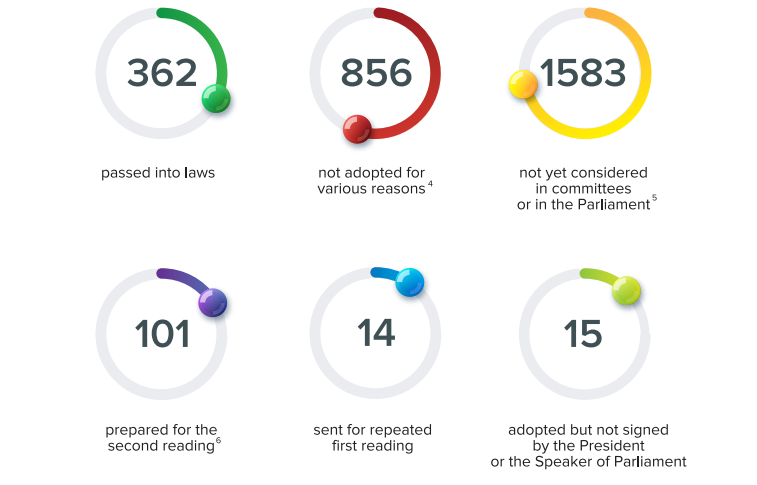
The above infographic shows that one in eight draft laws is passed into law and one in three is rejected. Almost half of the registered draft laws are still being processed in the designated committees, and no decision has been made on them.
The distribution of draft laws among committees is quite interesting as well. Here are the statistics:
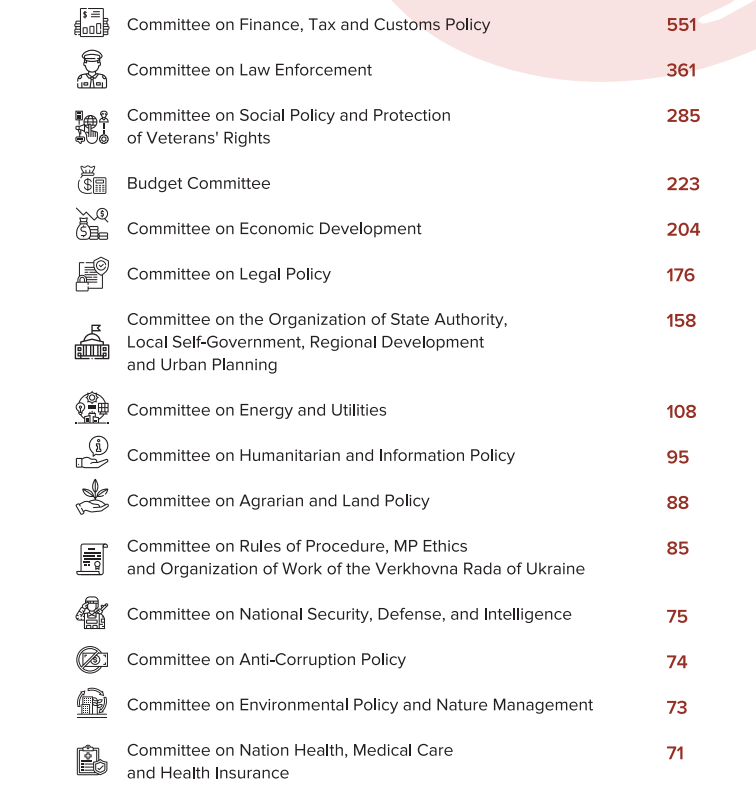
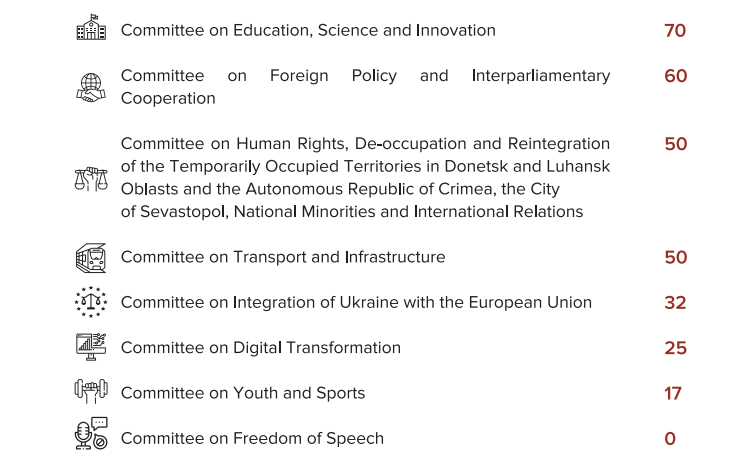
We can see that the Committee on Finance, Tax and Customs Policy is the unequivocal leader, accounting for 19% of the total number of draft laws. It is followed by the Law Enforcement Committee, and then by the Committee on Social Policy in the third place.
In almost a year and a half, no draft laws have been registered in the Committee on Freedom of Speech. 17 draft laws have been registered in the Committee on Youth and Sports, and the third one from the bottom is the Committee on Digital Transformation with 25 draft laws.
These figures show how efficiently committees perform the work they are meant to do. At the same time, this information covers only lawmaking work under the purview of committees and disregards the consideration of other draft laws, draft regulations, and the function of parliamentary oversight.
Section II

Anti-Corruption Committee and Anti-Corruption examination

According to our estimates, the Anti-Corruption Committee considered one in five draft laws filed for consideration. One in nine draft laws was given a negative assessment of the Committee (i.e. with corruption-causing factors detected).
During the review period (September 2019 December 31, 2020), the Anti-Corruption Committee was assigned the primary one in 74 draft laws and secondary in 2730.
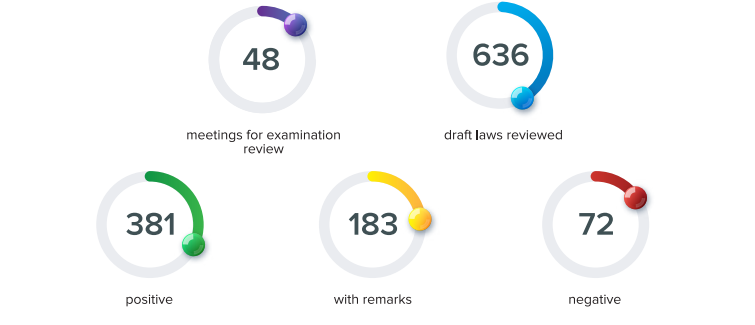
Thus, considering completeness as one of the criteria, work done by the Anti-Corruption Committee cannot be called complete as only a fifth of all the registered draft laws are examined. Analyzing the findings, we found out that only the text of the draft law is usually studied, disregarding the explanatory note and other supplementary documents. It should be noted that the Committee often points out the lack of financial and economic justification (which is part of the explanatory note); however, it rarely points to the discrepancy between the declared purpose and the text of the draft law.
Another shortcoming that makes it difficult to speak of complete anti-corruption examination by the Committee is its irregular nature, since only draft laws prepared for the first reading are examined, while their further progress is not taken into account. Thus, we can conclude only partial compliance with the criterion of completeness.
On the other hand, analysis of draft laws selected for examination shows compliance with the prioritizing criterion, as 57 out of 101 (56.44%) draft laws passed in the first reading did have opinions of the Anti-Corruption Committee issued for them. 163 out of 377 (43.24%) draft laws adopted overall also received opinions of the Anti-Corruption Committee. This lens indicates that the draft laws for examination were chosen correctly, given the objective possibility they would become laws.
In February 2020, the Anti-Corruption Committee developed the Procedure for Review of Draft Regulatory Acts (approved at Committee meeting of 12.03.2020). The Procedure contains the period for examination (21 days) and stipulates that draft laws would be checked for compliance with corruption prevention laws, and the verification is based on the Examination Methodology approved by the Ministry of Justice of Ukraine. The Committee does not have its own methodology.
Based on the analysis of the Committee's decisions on 72 draft laws found to be inconsistent with anti-corruption legislation, it can be concluded that in its decisions, the Committee does not refer to the Methodology of the Ministry of Justice of Ukraine and does not meet the deadline set in the Procedure. This indicates non-compliance with the criteria of argumentativeness and timeliness of the anti-corruption examination.
Conducting anti-corruption examination without a proper methodology negatively impacts its effectiveness, namely, the criterion of uniform approaches. Analysis of the opinions issued by the Anti-Corruption Committee has shown that there is little uniformity of approaches to the examination, as evidenced by the fact that sometimes the draft law ends up in the category "with remarks," though the identified shortcomings are of a higher corruption risk (e.g. draft
law No. 2285-d "On State Regulation on Organizing and Conducting Gambling") than the shortcomings later identified in draft laws with negative opinions, No. 2069-Draft Law on Amendments to Article 165 of the Tax Code of Ukraine (On Categorizing Proceeds of Property Rent to an Internally Displaced Person as a Type of Income Not Included in the Calculation of Total Monthly (Annual) Taxable Income).
Moreover, there are cases when the draft law is ruled to comply with the requirements of anti-corruption legislation, although the opinion contains remarks on the provisions of the draft law which may contribute to the emergence of corruption risks.
For example, the opinion on the Draft Law on Amendments to Certain Legislative Acts on the Sale of Land Plots of National and Municipal Property or Title to Them (lease, superficies, perpetual lease) through Electronic Auctions No. 2195 states that the draft act does not contain corruption-causing factors, i.e. it complies with the requirements of the anti-corruption legislation. At the same time, according to the opinion, the Cabinet of Ministers of Ukraine was provided with too broad a range of powers (listed), which would empower it to have crucial influence on the bidding. We believe that the shortcomings found by the Committee carry clear corruption risks which should have led to this draft law being recognized as one which contains corruption-causing factors, i.e. the draft law should have received a negative opinion, or at least the status "with remarks." Thus, the above arguments indicate that the Anti-Corruption Committee did not comply with the criterion of uniform approaches in its anti-corruption examination.
Based on 72 Committee decisions where draft laws were ruled negative, we formed a ranking of MPs whose draft laws were ruled to contain high corruption risks.
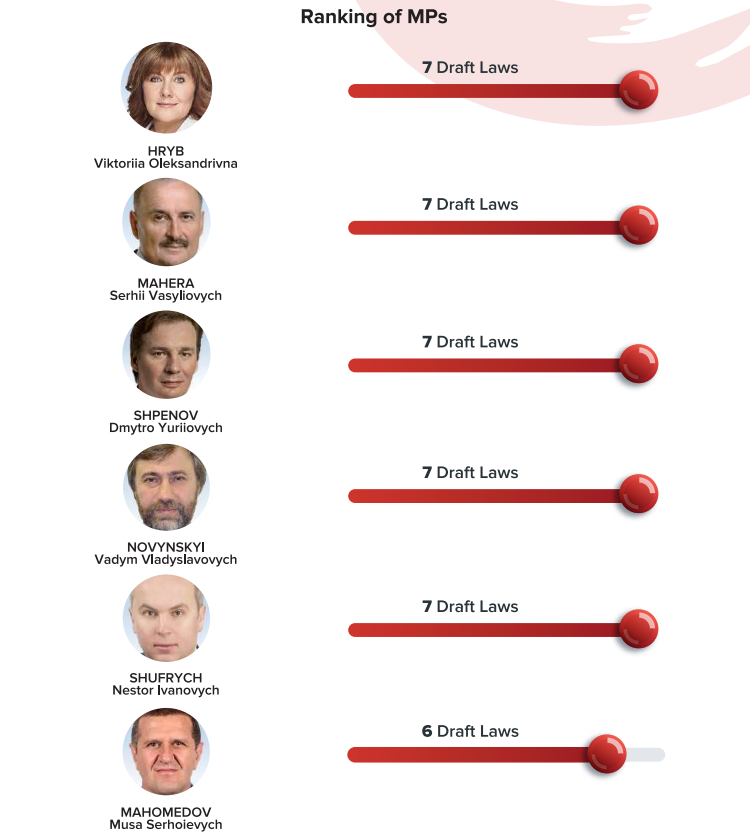
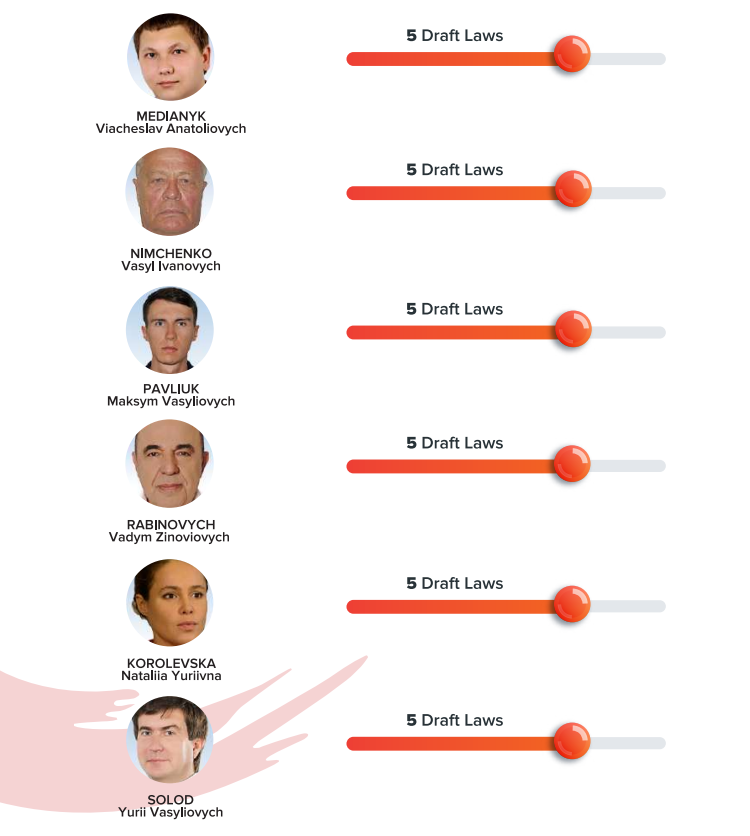
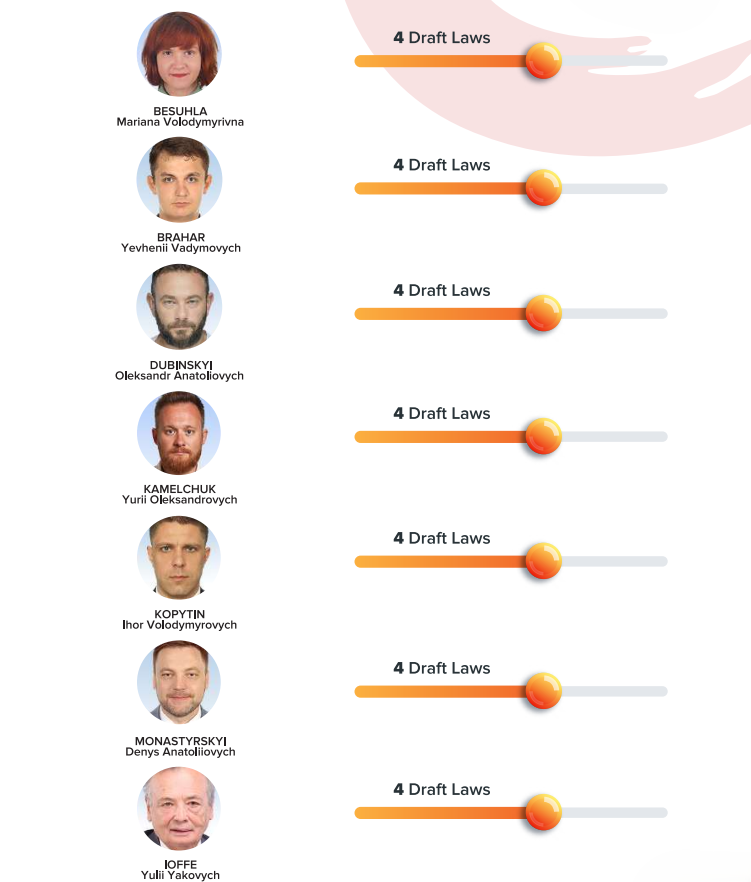
Ranking of COMMITTEES
The ranking reflects the areas in which the Anti-Corruption Committee most often identifies corruption-causing factors. The first place goes to taxation. This sphere of legal regulation is tied to the allocation of material resources, so it is of a particular interest for facilitators of corruption. This is explained, among other things, by the fact that the majority of draft laws that are registered - a whopping 22% of the total number-belong to this sphere. On the other hand, this trend does not apply to the two next leaders of the ranking-economic development and Rules of Procedure of the Parliament.
Thus, we can say that corruption-causing factors are mostly identified by the Anti-Corruption Committee in draft laws belonging to sectors pertaining to material resources, including taxes and economic development, which is an additional confirmation that the Anti-Corruption Committee complies with the prioritizing criterion.
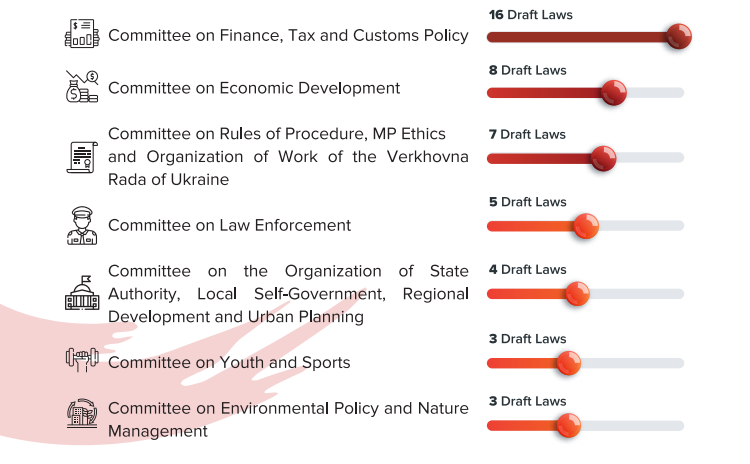
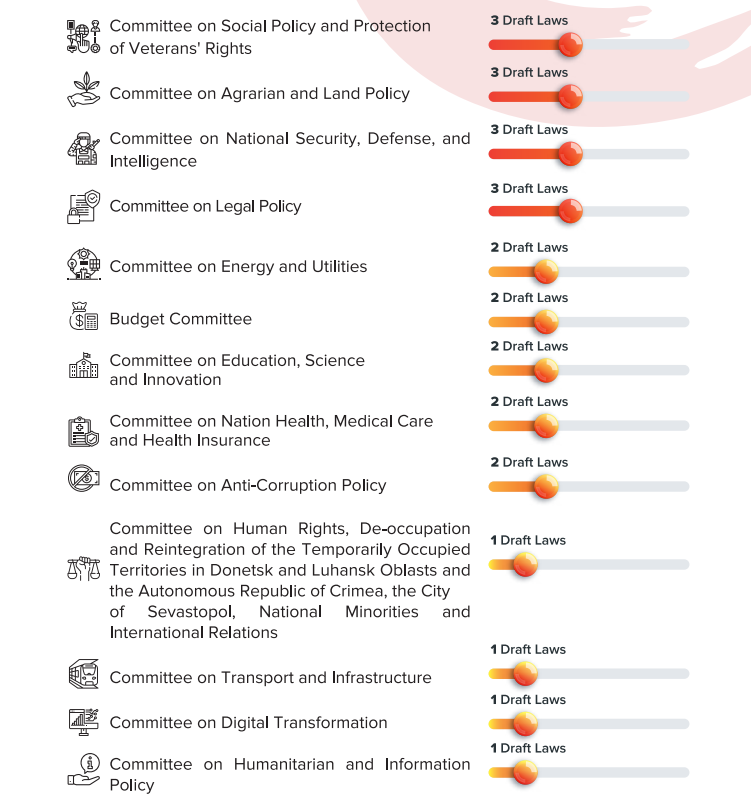
Ranking of FACTIONS
The analysis of legislative initiative in all draft laws recognized as containing corruption-causing factors has also enabled formation of a ranking of factions.
These 72 draft laws were signed by a total of 404 MPs. In general, the result by factions is as follows:
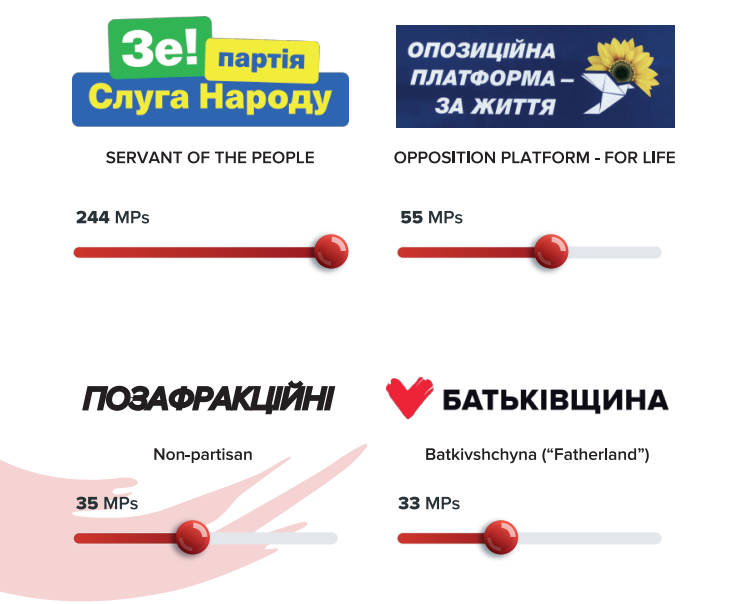
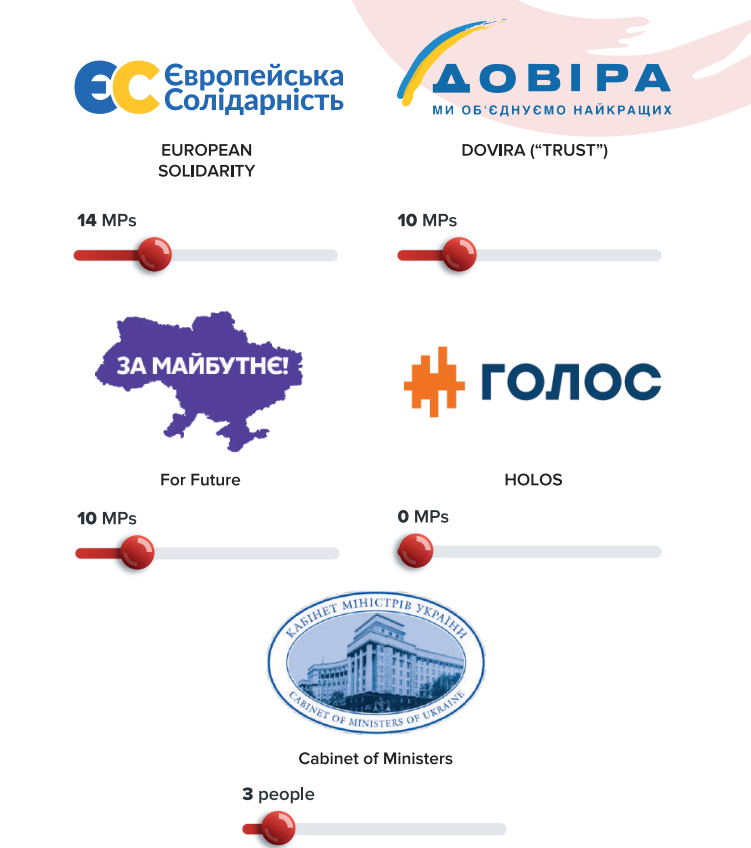
We studied whether other Parliament committees take into account the opinions of the Anti-Corruption Committee. The designated committees took into consideration only 5 out of the 72 opinions of the Anti-Corruption Committee while considering and making the decision to reject a draft law. In case of 21 opinions, no decision was made, because the designated committee has not considered those draft laws, or the draft law was withdrawn before the decision was made. While reviewing 38 draft laws, the Anti-Corruption Committee violated the deadline, and as a result, no opinion was available at the meeting of the designated committee. Another 6 conclusions were not taken into account by the designated committee during the relevant meeting."
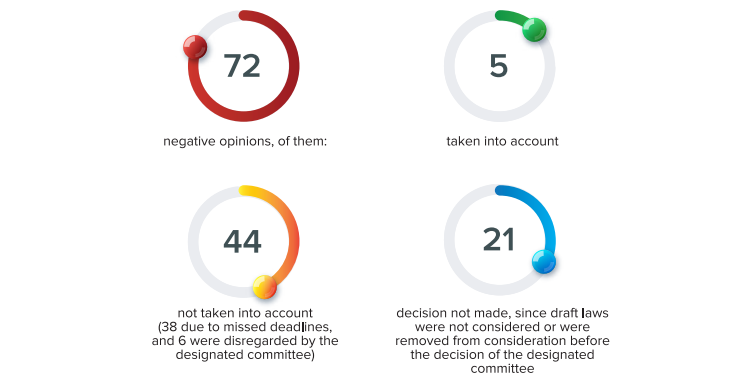
Missed deadlines and late consideration of draft laws show the fact that the Anti-Corruption Committee does not meet deadlines for the anti-corruption examination. This also affects the binding nature of the provided recommendations, since they are disregarded due to missed deadlines and thus are not taken into consideration, as shown by the fact that designated committees have taken into account only 5 negative opinions of the Anti-Corruption Committee. As a result, the impact of the anti-corruption examination on the decisions of the designated committee (and thus the entire Parliament) is not as high as expected.
As of December 31, 2020, 101 draft laws were in preparation for the second reading. Despite the fact that the Anti-Corruption Committee is obliged to conduct anti-corruption examination of draft laws only before the first reading, considering how unevenly committees take into account the opinions of the Anti-Corruption Committee, it is necessary to carry out monitoring both to eliminate identified risks before the second reading and to identify new risks that potentially occurred in the course of preparation of the draft law for the second reading.
Some issues can also be seen with the publicity of the Anti-Corruption Committee's examination; for instance, examination results are not published on the Committee website, even though there is a designated section. In addition, there was a significant delay in publishing the minutes of the Committee's meetings during the review period. For example, as of the end of August 2020, the last minutes published on the Committee's website were dated March 2020. Thus, we can conclude that the publicity level is not high enough.
Anti-corruption, examination of draft laws performed by the Anti-Corruption Committee can be generally characterized as transparent and open, since meetings where the results of the examination are presented are open and broadcast online. Moreover, the practice of cooperation between the ILI and the Committee indicates a high level of consideration for ILI's remarks, between 60% and 84% at different times. At the same time, it is not a common practice to invite non-governmental stakeholders to Committee meetings to discuss and review draft laws as part of the anti-corruption examination. Thus, the criterion of transparency and openness is mostly met.
With regard to compliance with the criterion of clarity of anti-corruption examination, it is difficult to say for certain, since there are no Committee recommendations on ways to avoid corruption-causing factors for lawmakers or any systematization of corruption-causing factors identified by the Committee either on its website or anywhere else in public domain.
Section III

Results of NACP Anti-Corruption Examination

Apart from the parliamentary committee, anti-corruption examination is now also performed by the National Agency on Corruption Prevention. The NACP is authorized by law to conduct anti-corruption examination of any draft law considered in the Parliament and to affect its adoption or amendment by its opinion. Since the NACP is granted full discretion in this issue, it is free to choose any draft laws to analyze and, as evidenced by practice, does not conduct anti-corruption examination of all draft laws.
In 2020, the NACP started conducting anti-corruption examination of draft laws considered in the Verkhovna Rada of Ukraine. As of December 31, 2020, the NACP had performed anti-corruption examination of 36 draft laws," was working on 2 more, and 1 opinion was issued on the draft law which was not registered in the Parliament.
The NACP performs its anti-corruption examination differently from the Committee. At the first stage, the NACP monitors the draft regulatory act. If potential corruption-causing factors are identified, this draft law is subject to "full" verification-the second stage of the anti-corruption examination, which results in an issued opinion with recommendations. This explains why 32 out of 33 draft laws analyzed by the NACP received a negative opinion. This may also justify the relatively small quantity of opinions issued by the NACP, since "full" anti-corruption examination is performed mainly for draft regulatory acts which do potentially contain corruption-causing factors.
Thus, the criterion of completeness is not fully met, since the number of draft laws analyzed by the NACP is currently low. On the other hand, the NACP analyzes not only the text of the draft law but also the explanatory note. It should be noted that the first opinion based on the results of the NACP anti-corruption examination dates back to June 2020, and most of the opinions (21 out of 33) were issued in October-November 2020. Maintaining this trend can have a positive impact on the number of NACP conclusions, and thus make anti-corruption examination performed by this agency more complete.
Most draft laws analyzed by the NACP concern economic policy and industry development. Given the above data on the most corrupt areas where corruption-causing factors have been identified by the Parliament, this focus makes sense and shows that the prioritizing criterion is met.
In order to assess the results of anti-corruption examination performed by the NACP, we have analyzed the situation with consideration of draft laws with corruption-causing factors identified by the NACP in the Parliament.
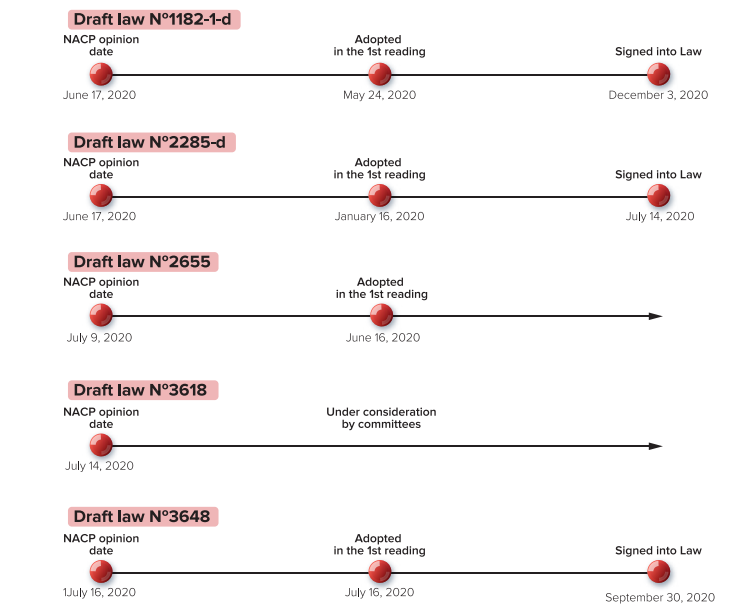
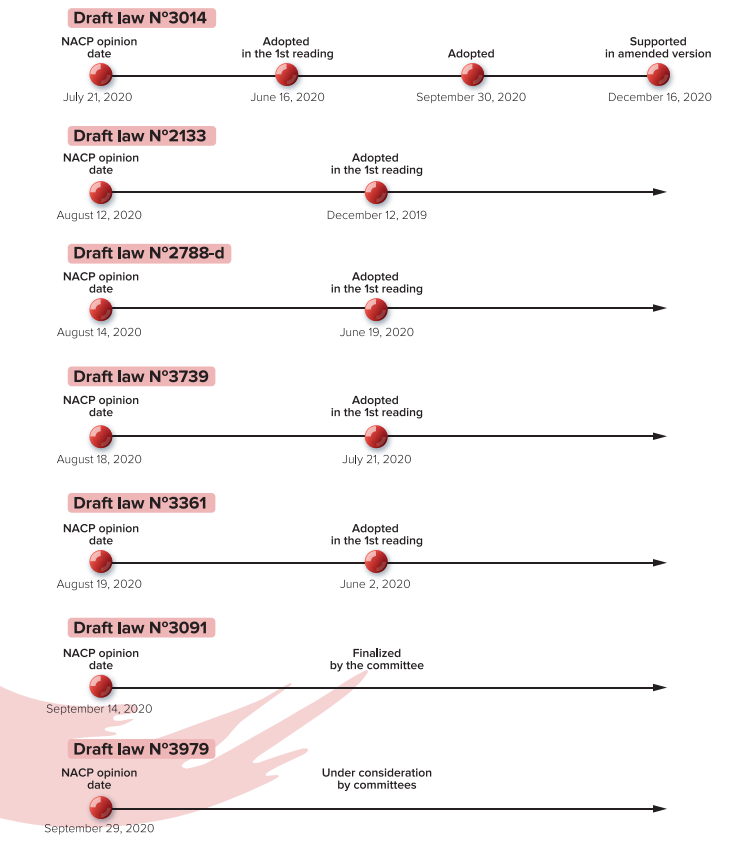
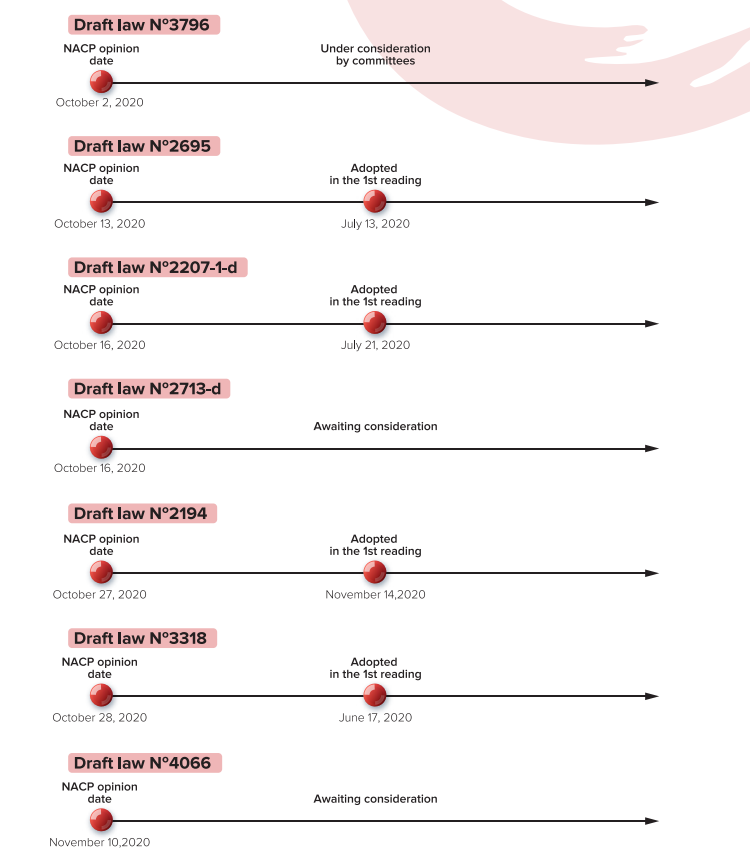
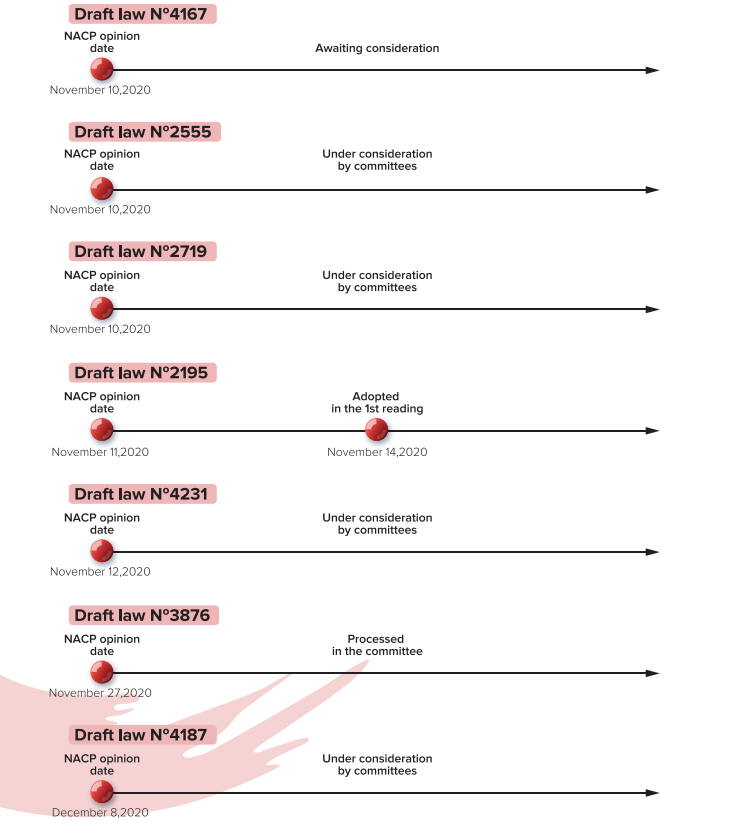
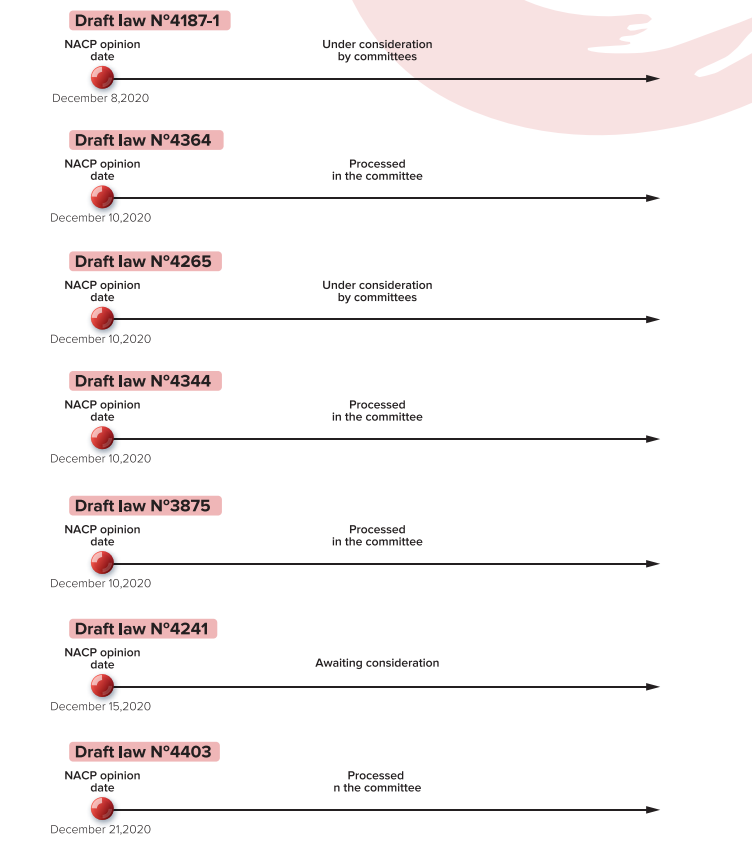
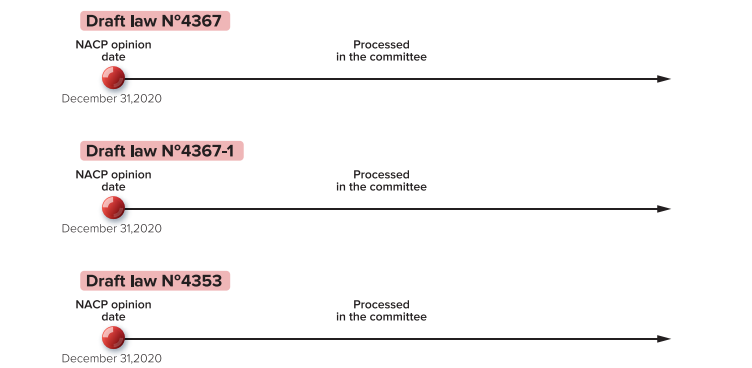
As evidenced by the information provided, the NACP mostly conducts anti-corruption examination of draft laws before their first reading in the Parliament; yet, 36% of NACP opinions were issued after the respective draft law has already been passed in the first reading. On the other hand, this enables focus on relevant draft laws of a high priority and point out provisions that need to be amended before the second reading, for MPs' information. On the other hand, the NACP should allocate resources for repeated anti-corruption examination of the text prepared by MPs for the second reading, to 1) monitor the consideration of comments and 2) identify new potential corruption-causing factors in the amendments before the second reading. In this case, the examination will be systemic. At the same time, as shown by the practice of the Anti-Corruption Committee, examination of draft laws at early stages makes it possible to stop the draft law from further consideration as early as in the first reading.
One interesting practice of the NACP is conducting anti-corruption examination of draft laws not yet registered in the Parliament."
Identifying corruption risks at this stage makes it possible to eliminate the shortcomings of the project and register the "fixed" draft law in the Parliament, which makes this activity more timely.
The anti-corruption examination of draft laws is carried out in strict accordance with the Methodology developed by the NACP, so the criterion of argumentativeness can be considered fully met.
Regarding the uniformity of approaches, in all NACP opinions, the results of the anti-corruption examination by the agency are quite uniform both in their form and content.
Regarding the impact of NACP opinions on the decision-making process in the Parliament, so far:

We also studied the draft laws passed in the first reading and those for which amendment tables and texts were provided before the second reading. The analysis of these documents has shown that in each such draft law the findings of anti-corruption examination conducted by the NACP were at least partly taken into account, namely: in draft law No. 2695, the executive act of a chief of police was excluded from the list of grounds for preventative measures," in draft law No. 2194, remarks on reviewing land management documentation were taken into account, and in draft law No. 3318, remarks concerning Inexpediency of determining the powers of extraordinary anti-epizootic Commissions through regulations have been taken into consideration.
Thus, we can say that the binding nature of NACP recommendations is at a rather high level, and considering the limited number of opinions issued by this agency, it further proves that NACP should be more active in its activity on anti-corruption examination.
Since the findings of NACP examination are available on the agency's official website and this activity is publicized on various information platforms, the criterion of publicity is also met.
Anti-corruption examination of draft laws is carried out by the NACP in compliance with the criteria of transparency and openness. Moreover, the practice of cooperation between the ILI and the NACP indicates a high level of consideration for ILI's remarks: each of the draft laws for which the ILI sent a negative opinion to the NACP was ruled corrupt by the agency. The NACP launched the anti-corruption examination of every draft law requested by the ILI. The agency also informs its Public Council on the anti-corruption examination of draft laws.
It is currently quite difficult to assess the clarity of the NACP examination, as the number of analyzed draft laws is small. At the same time, the NACP publishes brief analytical notes on the examination conducted and the main corruption-causing factors identified.
Section IV

Comparing the Results and Effectiveness of Anti-Corruption Examination of the Anti-Corruption Committee and NACP

In this section, we aim to study whether the NACP and the Anti-Corruption Committee agree in their positions on the presence of corruption-causing factors in draft laws. As baseline, we used all draft laws analyzed by the NACP.
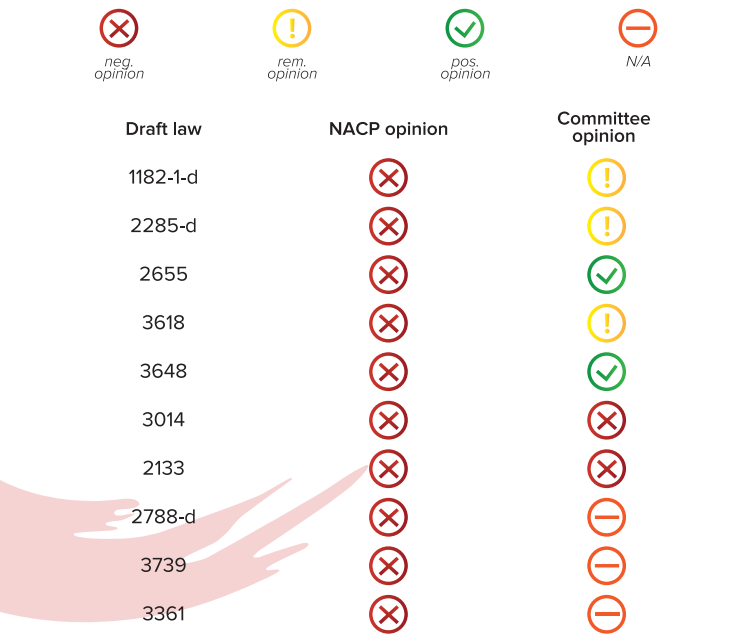
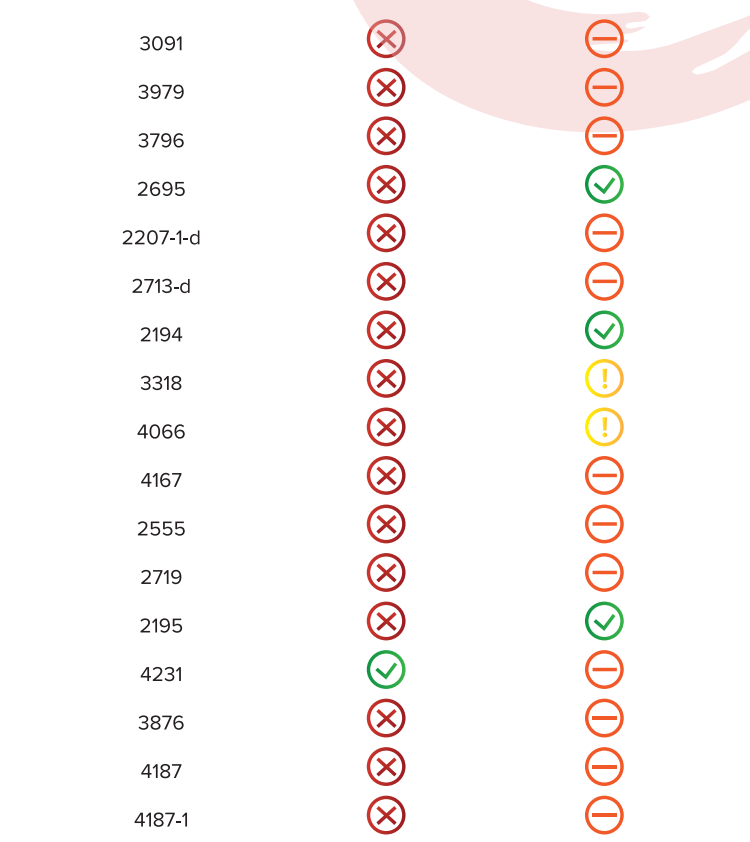
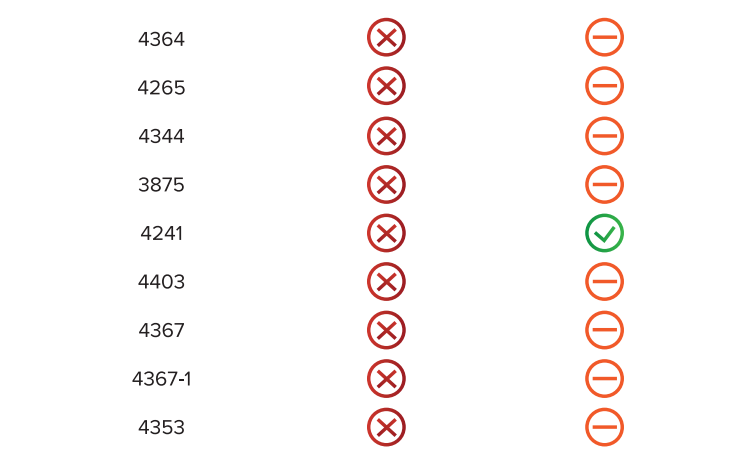
The comparison shows that the positions of the Committee and the NACP coincided only for two draft laws where corruption-causing factors were found.
This can be explained by the fact that the Committee essentially has three types of opinions: "complies with the requirements of the anti-corruption legislation" ("positive"), "complies with the requirements of the anti-corruption legislation, but there are some remarks" ("with remarks"), "does not comply with the requirements of the anti-corruption legislation" ("negative"). However, there are no clear boundaries between draft laws "with remarks" and "negative" ones. In other words, there are currently no clear official standards and guidelines on anti-corruption examination of draft laws conducted by the Anti-Corruption Committee, what is more, there is no methodology of this activity which would be catered specifically for the Anti-Corruption Committee and based on its practice of anti-corruption examination. At the same time, as practice shows, and as described above, the Committee has not developed uniform rules to distinguish between "negative" and "with remarks."
This ambiguity does not contribute to the effectiveness of the anti-corruption examination conducted by the Anti-Corruption Committee. In this regard, the Committee should develop its own methodology with a clear justification under which circumstances the identified corruption-causing factors are a violation of anti-corruption legislation, and when they are not. Another alternative is to do away with "remarks" altogether and consider all provisions with corruption-causing factors to be a violation of the anti-corruption legislation, with the recommendation to amend the draft law.
Regarding the effectiveness of anti-corruption examination by the two entities, we can conclude that currently, the examination conducted by the NACP is more. effective, though the activity of both requires improvement.
The Anti-Corruption Committee conducts significantly more anti-corruption reviews than the NACP but does not examine supporting documents, including explanatory notes, while the NACP does, describing the purpose of the draft law in its opinions and identifying cases of inconsistency with the ostensible purpose. At the same time, examination done by both entities is not systemic, since they only analyze draft laws prepared for the first reading (the Anti-Corruption Committee) or also draft laws which have been passed in the first reading (the NACP). Neither agency analyzes all draft laws passed in the first reading, let alone. the second one.
Both entities do prioritize draft laws correctly, analyzing ones from the most "risky" sectors first. At the same time, the NACP analyzes draft laws already passed in the first reading, l.e. those draft laws which are a priority because they have a high chance to be signed into law.
There are significant problems with timeliness with both agencies, which means there is a lower chance of the anti-corruption examination findings being taken into account, but the NACP practice is shifting towards earlier stages.
A major point in favor of the NACP in terms of quality is that it conducts its anti-corruption examination in full compliance with the NACP Methodology, i.e. the criterion of argumentativeness is met, while the Anti-Corruption Committee does not have such a methodology.
Adherence to the previous criterion significantly affects compliance with the criterion of uniform approaches. While the NACP opinions are quite uniform, the findings of the Anti-Corruption Committee are sometimes contradictory.
Regarding the binding nature of the recommendations, currently, more recommendations based on NACP findings have been taken into account, while designated committees have taken into account only 5 negative opinions issued by the Anti-Corruption Committee.
Unlike the Anti-Corruption Committee, the NACP publishes its opinions in a single place-on the official website, which indicates a higher level of publicity of these activities.
Both entities' examination can be considered quite transparent and open.
As for the clarity, the NACP is somewhat better with this criterion than the Anti-Corruption Committee.
Section V

Anti-Corruption Examination by Other Entities

Anti-corruption examination is also conducted by the Ministry of Justice of Ukraine using the aforementioned Anti-Corruption Examination Methodology. Between September 2019 and September 2020, the MoJ conducted 381 reviews of draft laws, with only 3 ruled negative. The Ministry primarily focuses on anti-corruption examination of bylaws, as the number of their issued opinions on bylaws is much higher than those concerning draft laws. In addition, there are no transparent rules for initiation of a review by the MoJ (which are actually legal reviews, not strictly anti-corruption), and there is no open information on whether the results of such reviews are taken into account. In addition, the Law of Ukraine "On Corruption Prevention" empowers the MoJ to conduct anti-corruption examination of draft acts considered by the Cabinet of Ministers of Ukraine as well as all regulatory acts subject to registration. Draft laws initiated for consideration in the Parliament by MPs are not subject to mandatory examination. by the MoJ. Thus, the overall impact of MoJ's anti-corruption examination is rather low considering the total number of draft laws registered in the Parliament.
Civic anti-corruption examination of draft laws conducted by the Institute of Legislative Ideas during the 9th convocation of the Parliament (as of December 31, 2020) has resulted in 1617 analyzed draft laws, including:

Having analyzed the decisions of the Anti-Corruption Committee concerning draft laws with remarks or inconsistent with the anti-corruption legislation, we can say that 80% of ILI remarks have been taken into account by the Anti-Corruption Committee in decision-making concerning draft laws.
As part of civic anti-corruption examination, ILI has issued opinions concerning over 55% of draft laws registered in the Parliament.
In addition to fruitful cooperation with the parliamentary committee, the ILI has initiated the first NACP anti-corruption reviews, including examination of draft laws "On Internal Water Transportation," "On Realtor Activity," "On Amendments to the Law of Ukraine 'On Public Procurement' Concerning Creating Conditions for Sustainable Development and Modernization of the Domestic Industry." What Is more, ILI opinions have been taken into account by the NACP in analysis of other draft laws.
Conclusions

Findings and Recommendations

The filter of anti-corruption examination is currently best implemented by two public agencies, the Parliament represented by the Committee on Anti-Corruption Policy and the National Agency on Corruption Prevention. At the same time, based on the findings of this study, we find it necessary to provide recommendations for further improvement of anti-corruption examination of draft laws with regard to specific criteria of its effectiveness.
Recommendations to the Anti-Corruption Committee
01. Conduct comprehensive anti-corruption examination of draft laws at all stages of their consideration in the Parliament.
The analysis of draft laws not only in preparation for the first reading but also at the further stages will make the anti-corruption examination by the Committee more comprehensive. In order to monitor whether the identified corruption-causing factors have been eliminated before the final adoption of the draft law, the Committee should develop changes to the Rules of Procedure and the necessary methodological framework. The Committee should conduct its examination in a comprehensive manner, i.e. study not only the text of the draft law, but also the explanatory note and other supplementary documents. The implementation of these recommendations will allow to achieve the criterion of completeness of anti-corruption expertise.
02. Focus on draft laws that have a real prospect of becoming laws in the near future.
The aim is to examine all the registered draft laws, but considering objective limitations, it makes sense to focus on draft laws "with a high potential," prioritizing their examination over others and thus complying with the respective criterion.
03. Approve the examination results faster.
Currently, most opinions are issued by the Committee after the draft law has already been considered by the designated committee. Therefore, approving the examination results within the period stipulated by the Parliamentary Rules of Procedure and the internal Rules of Procedure of the Anti-Corruption Committee, as well as increasing the number of meetings of the Anti-Corruption Committee and its subcommittees dedicated to the anti-corruption examination will make it more effective and timely, allowing more consideration for the results of such examination.
04. Develop and use original anti-corruption examination methodology.
The lack of an anti-corruption examination methodology negatively impacts the quality of this examination as well as its effectiveness. Therefore, the development of a high-quality, professional and evidence-based methodology for anti-corruption examination of draft laws and its further use by the Committee will help it comply with the criterion of argumentativeness and significantly improve upon other criteria as well.
05. Develop a uniform practice of form and content of anti-corruption examination findings and do away with the use of "medium" score ("with remarks").
Currently, there is no unified form of Committee opinions, and the practice of ruling draft laws consistent or inconsistent with anti-corruption legislation is somewhat uneven. "Remarks" in issued opinions are often quite significant and attest to corruption risks in the draft law. Therefore, it makes sense to do away with "remarks" altogether and consider all provisions with corruption-causing factors to be a violation of the anti-corruption legislation, with the recommendation to amend the draft law. Compliance with these recommendations will help with the uniform approaches criterion and thus make the examination done by the Committee more effective.
06. Monitor whether recommendations provided in the issued opinions have been taken into account.
The main purpose of anti-corruption examination is to prevent provisions containing corruption-causing factors from becoming law. Therefore, it is a key task of the Committee to ensure that the recommendations made as a result of the examination should be taken into account.
If this point is monitored and grounds for failure to take these recommendations into consideration are recorded, this will make the examination more effective and help achieve the criterion of binding nature of the recommendations.
07. Publish the results of the anti-corruption examination on the Committee's website and publish the minutes of the Committee's meetings in a timely manner.
Currently, examination findings are not published on the Committee website, even though the relevant section has been set up. There are also significant delays in publishing the minutes of the Committee's meetings. If these shortcomings are fixed, the criterion of publicity will be met.
08. Engage non-governmental stakeholders in Committee meetings.
We recommend publishing draft opinions before Committee meetings, which will enable stakeholders to contribute their points before final opinions are approved by the Committee. The participation of the public, non-governmental organizations and international partners in the Committee meetings during the consideration and discussion of draft laws with concerns voiced by such stakeholders will make the decisions made at Committee meetings more legitimate and just. This will contribute to the effectiveness by meeting the criterion of transparency and openness.
09. Publish materials with systematized corruption-causing factors and relevant recommendations for lawmakers.
Anti-corruption examination of draft laws should have a preventive effect and help improve the quality of adopted laws. For this purpose, materials should be published with systematized corruption-causing factors and contain recommendations for lawmakers on how to prevent corruption risks in legislative provisions in the future. Implementing these recommendations will improve the clarity of examination and thus its effectiveness.
Recommendations to the NACP
01. Increase the scope of "fully verified" draft laws, conduct repeated anti-corruption examination of draft laws prepared by Parliament committees for the second reading.
Currently, very few draft laws have been "fully" verified by the NACP, and there is no repeated examination of draft laws prepared for the second reading. In addition, deadlines should be calculated to make sure the recommendations can be taken into account. The future progress of risky draft laws in the Parliament should also be monitored. The implementation of these recommendations will allow to achieve the timeliness and completeness of the examination.
02. Monitor whether recommendations provided in the issued opinions have been taken into account.
The findings of NACP examination are quite substantial, and the recommendations are profound, with potential to eliminate the identified corruption risks. However, it usually remains unknown whether specific recommendations of the NACP have been taken into account in further consideration of the draft law in the Parliament. Analysis of this progress and finding out the reasons why certain recommendations have been taken into account or not may help fix the shortcomings of the examination and eventually contribute to the achievement of binding nature of the recommendations.
03. Publish information on draft laws that went through prior screening and are not subject to full verification based on screening results.
The NACP's anti-corruption examination takes place in two stages, and only draft laws previously selected through screening proceed to full verification.
The NACP issues opinions based on the results of this verification. However, there is no information on draft laws which have been through prior screening and did not end up selected for full verification, which makes it impossible to assess either the quantity of the screened draft laws or the results of this prior analysis. If this information is published, this will contribute to the publicity of the anti-corruption examination by the NACP.
04. Increase stakeholder engagement in prior screening and full verification of draft laws.
The participation of the public, other government agencies, non-governmental organizations and international partners both in the preliminary screening of draft laws and in the process of their full verification can improve the quality and effectiveness of NACP anti-corruption examination and promote transparency and openness of such activities.








